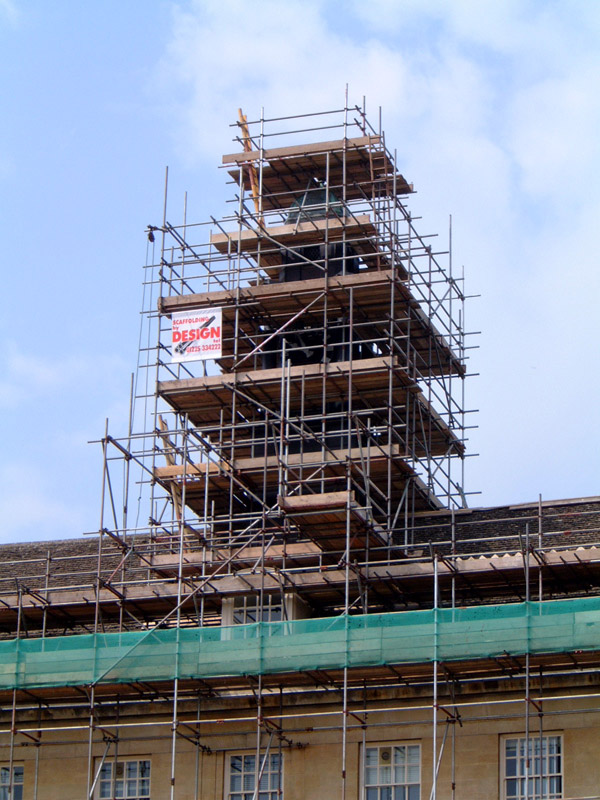
If your scaffold does not meet TG20:13 guidelines, you will also need to have the scaffolding designed. These are just a few of the situations in which you might need a well-designed scaffolding, meant to hold up to the load you intend to put on it and to keep your workers safe. Temporary buildings: If you’re building something that isn’t actually going to stay put, you probably need to design the scaffolding. If anything were to fall, they cannot be hit. However, this type of design will also need to provide protection for those walking below. This is something that can be designed to fit right into the existing sidewalk and street, leaving room for people to walk underneath.

Pedestrian routes: If you’re building over a section of street where a lot of people walk, you’ll need to set up a pedestrian tunnel or walkway. This means the scaffold needs to be very carefully measured and built according to the engineer’s design. Power lines: Any scaffolding that will be erected near electrical wires should be very carefully designed to provide protection for those who will be using it.įacade retention scaffolds: Since these types of scaffolds may have to resist more pressure, due to the retention capabilities of the facade. These will change with every single one built. This means any scaffolding will need to be designed just for that bridge. These are also used to build offshore rigs and other types of structures that involve building in or above the water.īridge scaffolds: Again, bridges are totally unique because they have to adapt to the landscape. Marine scaffolds: These are always going to need to be designed especially for the individual project, as they are unique to the building or boat that will be built. Many scaffolding companies hire engineers who have the necessary experience to design according to your individual needs. If you have a complex building with different design element, you need a scaffold design to work.

This is where bespoke scaffolds come into play. However, in some cases, the building or project is just too complex and requires a little extra planning. Good written and verbal communication skills.For most building projects, a regular scaffold will work very well and get the job completed.Ability to understand technical drawings and plans.> Find out more about work experience Skillsĭesirable skills for a scaffolder include: Potential employers will always be pleased to see work experience listed on your CV. You could gain this at school, or by working weekends and holidays with a company or relative who works as a scaffolder.
Work experience is essential to gaining employment within the construction industry. This would give you the opportunity to develop your skills from more experienced members of the team, and your employer may provide training to help you progress. You could apply directly to an employer to become a scaffolder or construction labourer, especially if you have some previous onsite experience. Your time will be split between on-the-job experience and a college or training provider. As an apprentice, you‘ll be fully employed by your company and expected to work a minimum of 30 hours a week. It’s also possible to complete a part-time, 11-week training programme to become a scaffolder, which is completed over a two year period.Īpprenticeships are open to anyone over the age of 16. You'll need 2 - 3 GCSEs, usually including maths and English, or equivalent, for an intermediate apprenticeship. You could apply for an intermediate scaffolder apprenticeship with a construction or scaffolding company, which will take 18 months. > Equivalent entry requirements explainedĪn apprenticeship is a good way into the construction industry. 2 or more GCSEs at grades 9 to 3 (A* to D), or equivalent (level 2 course).Up to 2 GCSEs at grades 3 to 1 (D to G), or equivalent (level 1 course).You could study for a Level 1 Certificate in Construction Skills or a Level 2 Certificate in Construction Operations to start you on your career path to becoming a scaffolder. College/training providerĪlthough there are no set entry requirements, anyone considering a career as a scaffolder would benefit from achieving GCSE qualifications (or equivalent) in maths and English. You may need a Construction Skills Certification Scheme (CSCS) card to work on a construction site. Although some of these options have certain qualification requirements, many employers are more interested in people who are enthusiastic, willing to learn and can follow instructions. You should explore these routes to becoming a scaffolder, to find out which is the right one for you. You could complete a college course, an apprenticeship or apply directly to an employer for work. While there are no formal qualifications needed to become a scaffolder, there are several routes you could take to help you pursue this career.


 0 kommentar(er)
0 kommentar(er)
